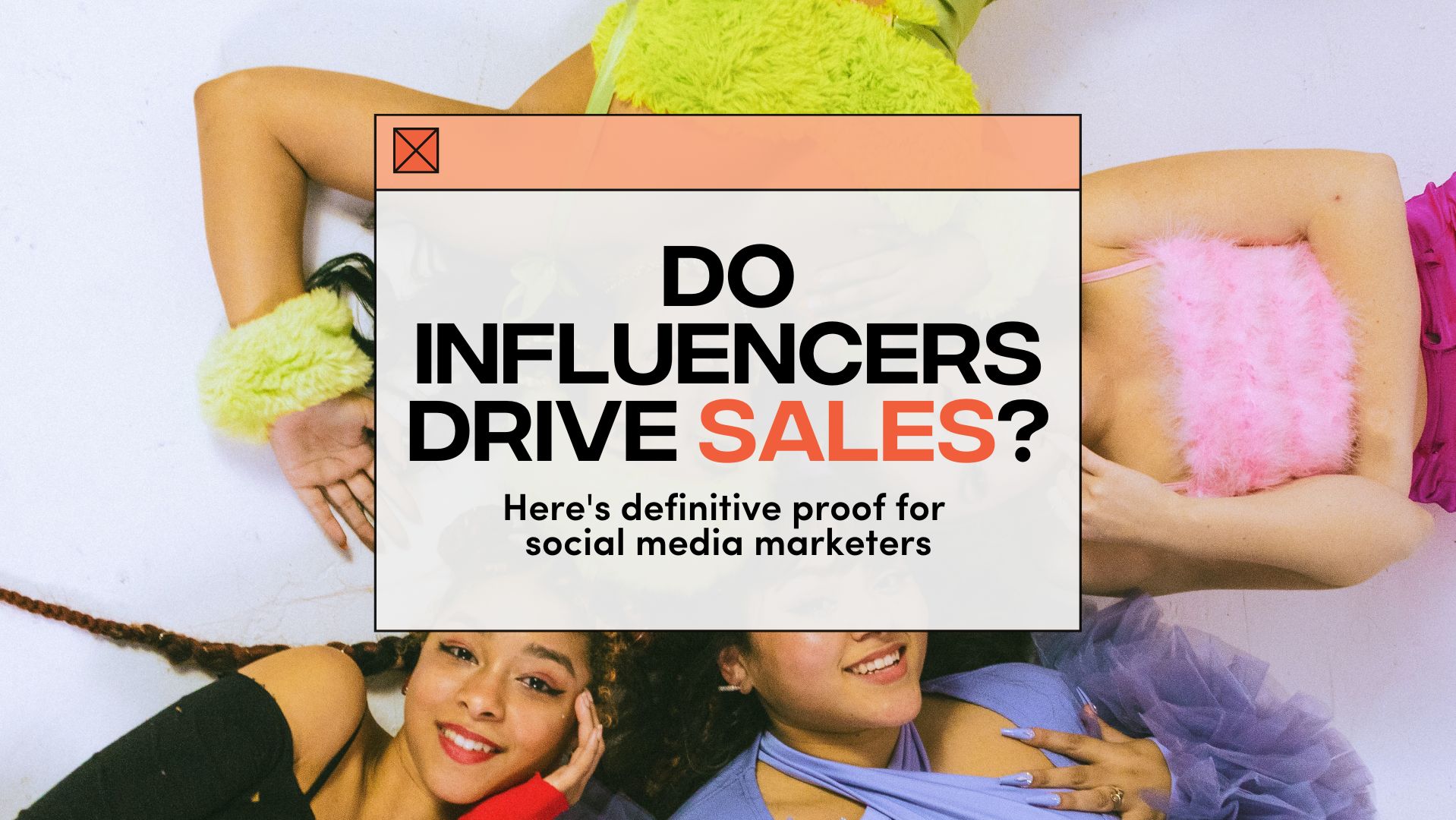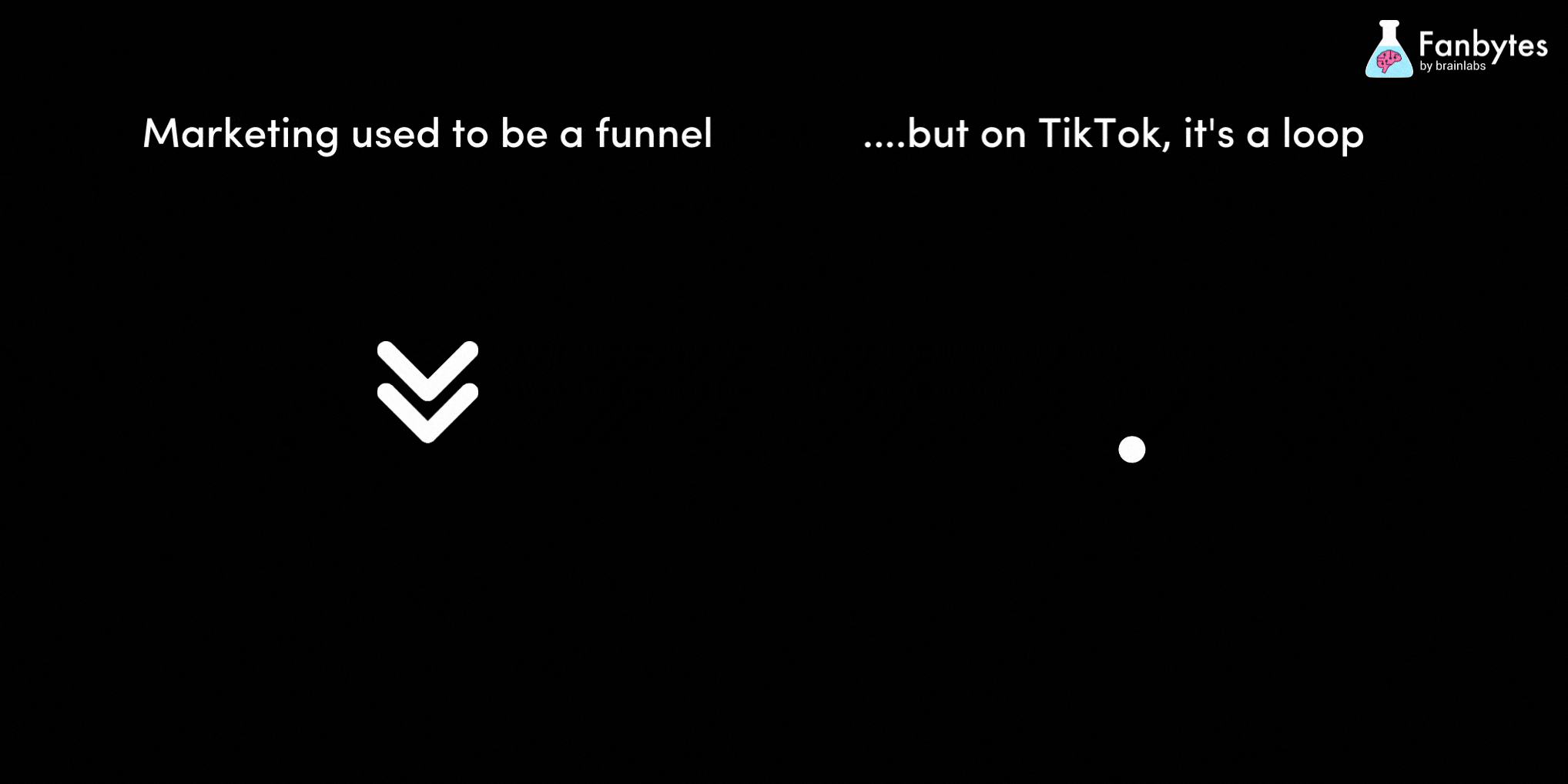
In 30 seconds:
- Influencers are a key element of any social media marketing strategy, raising brand awareness and driving sales to potential customers.
- An influencer marketing strategy is one of the best ways to introduce your brand to your target audience – or to guide your current followers further along the purchasing funnel.
- We’re explaining how to use social media influencers to drive sales, and – even better – how to prove their direct impact.
Do influencers drive sales? For years now, marketers have been saying a vehement yes, without much in the way of concrete evidence to back them up.
Although engagement on influencer content is high, and consumers report higher levels of trust in influencer-led campaigns than in traditional celebrities’ endorsements or other forms of digital advertising, finding a way to directly measure that impact – and therefore the return on investment – has been a challenge.
Now, as part of Brainlabs, we’ve been able to prove, in measurable figures, the impact that content creators have on organic search volumes, brand reputation, and (ultimately) sales.
So, if you’re incorporating endorsements from influencers into a campaign and you want to make sure you’re maximising your ROI, driving sales effectively, and getting results you can feed back – here’s how to get started.
How do influencers impact sales?
Anecdotally, we’ve known for a long time that influencer recommendations on social media platforms impact sales – it’s why marketing leaders are willing to spend their limited marketing budgets on them.
The traditional understanding of the influencer marketing funnel places content creators at the top ‘awareness’ stage. However, these recommendations inspire and prompt audiences to move further along in their purchasing intent – and can drive action throughout the marketing funnel.
Using key creator voices helps to push a brand’s message and increase awareness amongst social media users. By monitoring the reaction to those social media posts, brands are currently able to see the increased reach of their marketing campaign. Nielsen recently found that a 1% increase in awareness drives a 1% increase in future sales – proof that upper funnel campaigns drive sales.
But the direct impact of influencers can also go further – and the ways of measuring this ROI can too.
Fanbytes by Brainlabs’ Head of Creative Strategy, Tom Sweeney, recently spoke at our event, ‘My Brand Went Viral on TikTok – Now What?’ about the importance of increasing our ability to directly measure the impact of influencers on sales.
And that’s what our new research enables us to do, he says, finally “connecting the influencer marketing to the bottom line.”
How to use influencers to drive sales
Influencer partnerships can be hugely beneficial to brands, and bring them wider engagement, from larger audiences, both on and offline.
There are a few surefire ways to maximise your ROI when working with influencers – all backed up by our newest data research. Here’s how to get started:
1. Create a slick user journey
eCommerce brands will be well aware of the power of good SEO (that’s Search Engine Optimization) and seamless shopping UX on their conversions. Increasingly, these digital marketing factors are becoming tightly linked to social media marketing – and influencer marketing in particular – as social media platforms grow as both shopping sites and search engines.
This is particularly true for TikTok. TikTok SEO is becoming a key driver behind successful influencer marketing campaign outcomes, as is its ever-more seamless in-app shopping thanks to its various eCommerce partner integrations.
It’s worth noting that while TikTok Search stats are not available yet, further advancements to the search feature are expected in the new year – with potentially more opportunities for brands to make the most of the search feature in-platform.
Tom says, “As the platform emerges as a search platform, and we’ve seen data to suggest that influencer activity drives search performance on Google, it stands to reason that TikTok would want a share of the action.”
For help on how to streamline your purchase journeys on TikTok, read our guide on How to Use TikTok for Social Commerce. Additionally, make sure you’re discovered via organic search on TikTok by using our guide to how to get discovered via TikTok SEO.
2. Use emotion
We know that influencers command great engagement rates and positively impact shoppers’ purchase decisions because they inspire trust.
However, trust – while being something users can feel, is very difficult for marketers to create social media briefs around. Overtly trying to appear trustworthy can even have the opposite effect. Instead, brands should seek to create a sense of authenticity – and therefore connection – via making viewers feel something else.
In our event, Tom spoke about the power of linking emotion within your marketing campaign. He explained how, “if you look at the comments in any successful video from a brand, it’s not, “Wow, I really love Duolingo”. It’s “give this social media manager a raise”.”
In short – emotion drives action. Users who perceive branded content as authentic, in line with the content they expect to see on the platform, are then inspired by that emotion to act.
Tom explained the particular power this has when coupled with influencer content: “people celebrate influencers. When they get a brand deal, they’re like, “Oh my God, I can’t believe you’re talking about this. This is so sick. I’m glad you’re getting paid.” They want them to succeed”.
He added, “that emotion drives action.”
3. Diversify your influencer profiles
The types of influencers you use will affect the results you get from your campaign.
It’s not always the number of followers that has the biggest impact, either. Sometimes the best influencer for a campaign will be one of the growing cohort of micro-influencers, who often accrue higher engagement rates amongst a more targeted demographic than macro- or celebrity influencers.
Be prepared to look outside of your niche, too. Users trust influencer recommendations because they feel connected to them, so look for more ways your services, products or brand message can connect to different people. In our event, Lubna Mohsin, Regional Social Media & Communications Manager, EMEA at Estée Lauder described how the brand “wanted to tap into more communities that were most relevant to the benefits that we talked to.” In addition to beauty influencers, the brand worked with performers, influencers with disabilities and creators who’d seen huge changes in their lives to tell a more individual – and impactful – story.
Bear in mind that the most active social media users are overwhelmingly Gen Z, too, who are known to be the most diverse generation in history – and who demand that the brands they support should highlight that diversity through their campaigns.
This methodology is also a great way to ensure you stand out – and are remembered – as your influencer selection will be highly curated. The right influencers for your brand’s campaign will not be the same as for another’s.
Brands who embrace a wider range of influencer content will undoubtedly manage to encourage a wider range of participation from audiences – creating a cluster effect with multiple influencers that cannot be replicated with only a limited campaign.
4. Embrace storytelling
In order to keep audiences engaged, brands should think of their campaigns in terms of storytelling. This will guide them not only to create more diverse content, but also to more effectively reel viewers in with the kind of content that’s being put out.
And, as Tom explained at our event, “to build reputation, you need sustained influencer activity.”
By making sure that influencer activity is varied and interesting, you stand a better chance of continuing to engage newer audiences – and to get on the right side of the TikTok algorithm with high-performing content.
“Audiences love variety. So give that to them,” Tom advised listeners. He pointed out that this variety in influencer content can be as simple as structuring your videos differently to make sure you’re grabbing users’ attention early – and keeping it. “It’s about starting almost with the revealer sometimes. It’s about getting to the meat of the story.”
5. Encourage participation
A marketing campaign, no matter the marketing channel, is traditionally pictured in terms of the ‘funnel’ – the path potential consumers are led down from first interaction, to sale.
But, with influencers on TikTok in particular, it’s not so much a funnel: it’s a loop.
That’s because the TikTok algorithm can put UGC or influencer-led content on users’ feeds without prompting – simply because it’s entertaining – which can then inspire a purchase decision, which is itself used in content creation… And so the loop continues.

Participation is a key part of customer acquisition on TikTok, transforming the marketing funnel into an endless loop.
For this reason, it’s important to use hashtags and other tactics that can help the TikTok algorithm to understand what your video is about. Because it’s this discoverability that can help your content appear across a wider range of users’ feeds.
You can read our guide to the TikTok algorithm here.
Plus, the more you can encourage other users to get involved in your campaign, the better your chances of widening your brand’s reach.
Speaking about a past Fanbytes by Brainlabs campaign, Tom explained how this strategy works: “We needed to make a huge amount of noise to achieve massive reach. But noise alone isn’t enough to change people’s habits.”
By encouraging users to try a challenge themselves, “We built the ultimate influencer feedback loop.”
As social media content continues to become democratised, we predict that conversion-as-participation will be a key marketing trend for 2023 and beyond.
Definitive proof of the impact of influencer marketing
How can you tell you’ve made the most of your social media influencer campaign? How can you know for sure that your marketing efforts are having a direct impact on your bottom line, or brand reputation?
Well, before now, that kind of data has been difficult to prove.
In a recent client campaign, however, exciting new research from Fanbytes by Brainlabs with Brainlabs was able to isolate the influencer effect – and measure its impact in numbers.
As Tom explains, this solves one of marketers’ biggest roadblocks – “How can you unlock budget when you can’t see the full picture of the commercial value?”
Through our research we were able to reach that full-picture view of the commercial value – and create a formula that can be replicated and used across every influencer campaign.
How to measure the impact of influencers
The strategy
Measuring the impact of an influencer campaign begins by establishing a baseline to compare any improvements to. This meant finding the baseline value of the branded search, so that any fluctuations on this value could be studied and attributed to the influencer campaign, where appropriate.
“If you can show the baseline value of your branded search, we can then track the uplift from influencer activity,” says Tom. And with this baseline established, it’s a matter of correlation analysis.
We used three separate data sets to draw from – influencer performance stats, YouGov brand index data, and search engine data.
“We’ve taken time-stamped data from influencer activity – on the Fanbytes platform, we can see minute-to-minute performance of the influencer content that’s going live (when it’s been published, when people are liking it, engaging with it, sharing it etc.). All of those data points are tracked live and then timestamped and logged. What we then do is overlay it with two additional data sets.”
One is the search engine rankings, and the other, “is time-stamped YouGov brand index data, which tracks the reputation, awareness, word of mouth, consideration, purchase intent etc. of the different brand factors.”
Even better, this data is refreshed daily.
But the most important part of the above, as Tom explains, was the fact that all of this data is tracked in terms of timings, too: “Because we have time-stamped influencer data and time-stamped YouGov data, we can start to check to see if there’s a correlation between influencer activity and outcomes in the brand index data. We then overlay that against search data.”
The results? A minute-by-minute map of the data changes caused by the ongoing influencer activity.
The findings
“What we could see, drilling into this data, was a really very, very strong correlation between likes, shares and views, and the impact on reputation, attention, ad awareness and word of mouth,” explained Tom.
“Basically, as you increase the number of likes, shares and views, there is a very significant improvement in word of mouth. Particularly driven by likes and views – as you see more posts from influencers, your propensity to discuss a brand with friends, families and peers increases as well.”
This is incredibly important news for brands. It means that the impact of an influencer campaign extends beyond just the metrics shown on social media – and has an effect outside of the platform and outside of the web as well.
“We’ve decoupled this from other marketing activities,” Tom explains, using the timestamped data to prove that these results spike as a direct result of the influencer campaigns, not just overall marketing activity.
Another finding was that influencer activity impacts brand reputation as well.
It’s not an immediate result – the data showed a time lapse in play. After one week, the word of mouth was shown to clearly increase brand reputation – implying that the work the influencers were doing was filtering through into word of mouth conversations, which then in turn impacted brand organic search again… creating another feedback loop.
Tom explained: “For the duration of the campaign, the numbers were correlated. But you can start to see that word of mouth and attention were strongly correlated towards brand search. Essentially what we could prove is that there is a strong correlation between word of mouth and brand search – and we knew that influencers drive word of mouth.
“We know there’s a one-week lag – so the most effective way of driving results is doing more than one week of activity, because it improves over time. Word of mouth and attention are very strongly driven by high frequency.”
Influencers drive sales - and much more besides
Now marketers no longer need to rely on word of mouth or blind faith to trust that influencer campaigns are having an effect on their brands. With our research, brands can actually prove – in cold, hard data – the direct impact of an influencer campaign.
“We can assuredly say that branded search can be driven by influencer activity, even when it’s not designed to,” says Tom.
And it stretches beyond just a rise in traditional search volume, too.
“Because we know that there’s a live impact on traditional search, it stands to reason that people who are consuming content on a platform are likely to search for it, the brand, using TikTok,” Tom explains. “So what this data doesn’t show is that uplift, and then how brands can tap into that, too – which is by optimising content for search.”
In short – by using influencers to increase brand reputation, and traditional search volume, brands can also be assured they’re increasing their non-traditional search volumes, too.
And, of course, their sales.
That’s the power of a good influencer marketing campaign. Contact us to learn more about how our marketing agency can help your brand conduct an influencer campaign that really makes a difference to your bottom line.
For more advice on maximising the effects of your TikTok strategies and marketing tools to boost sales or make users fall in love with your new products, read on:




